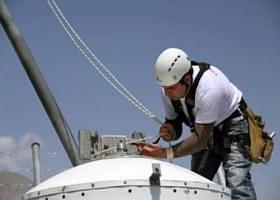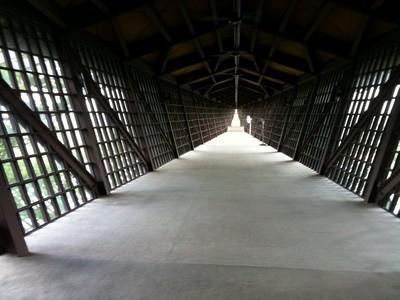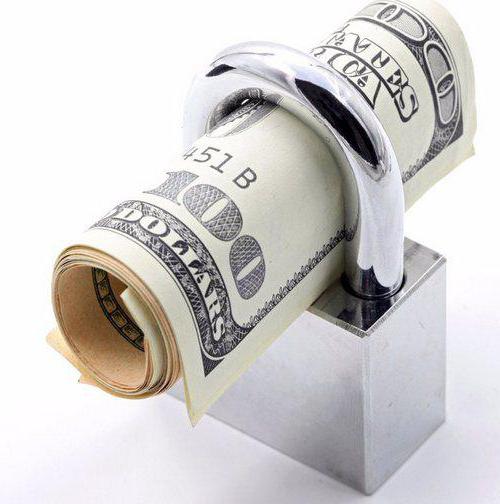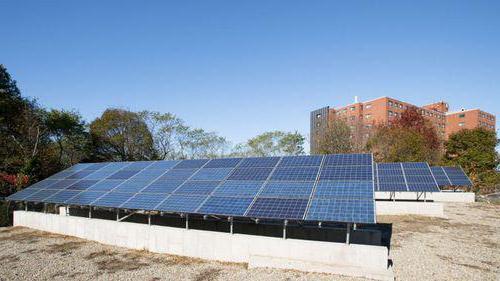Preservation of fixed assets is carried out when they are temporarily not used. This procedure is present in the practice of many companies.
Order for the conservation of fixed assets
This document is required. The following information should be indicated in the management decision:
- Reasons for temporary non-use of the OS.
- The term of conservation of fixed assets.
- Responsible staff positions.
The head appoints specialists who are responsible for both the direct conservation and the subsequent re-conservation of fixed assets. In addition, persons who ensure their proper storage during a period of temporary downtime are identified.
Additional design
Employees must take an inventory and draw up an appropriate act of conservation of fixed assets. This document confirms the fact of the operation. The order acts as a paper proving the intention of the enterprise to conserve fixed assets. The actual procedure with this document cannot be confirmed. The transfer of fixed assets for conservation involves a number of activities. Among them, bringing unused temporarily assets to a state in which their proper storage will be ensured. With the return of the OS to production, appropriate measures are taken to bring them into a form suitable for operation. The legislation does not provide for unified forms of acts. The company has the right to develop them independently.
Depreciation
When removing OS from an active state for a period of more than 3 months. it is not charged. It will be possible to resume the depreciation calculation after the reverse commissioning. Accounting for the conservation of fixed assets is carried out in accordance with Rules 6/01 and the Guidelines. An extension of the useful life of more than three months is not provided. But in accounting, depreciation can be carried out at the end of this time. In this regard, after the OS is re-entered into the asset, the calculations are carried out in the same way as before their withdrawal. 
Termination and renewal of accruals
Many experts have a question, from what time should be suspended and then start calculating depreciation for fixed assets, transferred to conservation for a period of more than 3 months. The company sets the month for termination and renewal of charges on its own. The option that will be selected should be recorded in its accounting policy. The legislation does not establish a specific moment for the termination and resumption of settlements for funds that have been mothballed for more than 3 months. AT accounting policies one of the options should be fixed:
- Suspension of depreciation charges is carried out from the 1st day of the month when fixed assets were mothballed. The calculation should be resumed from the first day of the period in which the asset was put back into production.
- The accrual stops from the 1st of the month, which will follow the one during which the conservation of fixed assets was carried out. The calculation resumes from the first day of the period that follows the one during which the fixed assets are put into production.
Recommendation
In the accounting policy, it is advisable to fix the same procedure for the suspension and renewal of depreciation charges on fixed assets, preserved for a period of more than 3 months, as in tax accounting. This will avoid the occurrence of temporary differences. They can lead to the formation of deferred tax liabilities. 
Fixed assets: conservation (1C)
To reflect the operation in the program, the document "Change in the state of fixed assets" is introduced. It is designed to stop or resume depreciation. Next you need to select "Event" - "Preservation" from the directory of operations with the OS. Type of procedure "Depreciation charge". In the column "Affects the calculation" is checked. The field "Depreciate depreciation" remains unchecked. When withdrawing from preservation, the document "Change in the state of the main Wed-in" is introduced. Next, select "Event". It will be "Withdrawal from Conservation" with a view of "Depreciation charge". In the column "Affects accrual" you need to check. The "Accrual depreciation" field is also marked.
Reporting
The company is obliged to fix the OS according to the degree of their application:
- in operation;
- in reserve (stock);
- in temporary non-use and so on.
This rule is established in Guidelines No. 91n. It is possible to fix the state of the OS in accordance with their use with or without reflection on the account. 01 (03). If the conservation of fixed assets is carried out for a period of more than 3 months, it is advisable to display them on a separate subaccount. When the OS is brought back into production, the following should be reflected:
DB 01 (03), subch. "OS in operation"
Ct 01 (03), subch. "OS on conservation"
- canned.
In the process of implementing these procedures with assets, costs may arise. For example, it can be material costs for packaging, installation / dismantling of equipment and so on. If such costs occur when the conservation and conservation is carried out fixed assets posting will be like this:
DB 91-2 Ct 10 (23, 68, 60, 69 ...)
- Included are expenses on re-conservation, conservation and storage of the OS.
OSSO: profit taxation
Tax accounting of expenses will depend on the purpose of the property that is being preserved. If operating systems are used in the non-manufacturing sector, then the costs are not taken into account. This is due to the fact that these costs will not be justified in an economic sense, they do not relate to the activities of the company, generating revenue. If fixed assets that are on conservation are used in production, then the costs will reduce the base for income tax. The costs of bringing the OS into temporary non-use are included in non-operating expenses. 
Accrual methods
In the calculation, the tax base is reduced in the period to which non-operating expenses relate. The costs of conservation and conservation are recorded in the time period in which the corresponding act was signed. It is during this period that costs are considered economically feasible. The costs of maintaining temporarily unused operating systems are reflected in the period of time in which they were incurred. For example, lubricants are taken into account when documents proving their use were signed. If the company uses the cash method, then, in addition to the above requirements, it is necessary that the costs be paid.
Other costs
The question often arises whether it is possible to include utility bills, lighting and security costs of a conservation building in the calculation of income tax. Yes, these expenses are included in non-operating expenses. This provision is present in Art. 265, paragraph 1, sub. 9 Tax Code. An enterprise, therefore, has the right to reflect in tax reports the costs aimed at maintaining the mothballed OS in proper condition. Moreover, according to Art. 252, paragraph 1 of the Tax Code, it is necessary to have documentary evidence and an economic justification for these expenses. The costs associated with the conservation of fixed assets aimed at servicing farms and industries should be reflected separately.
VAT at OSSN
The procedure for the conservation of fixed assets does not provide for the restoration of value added tax from their residual price. But while the OS is in an unused state or when it is withdrawn to the asset, the company may have an obligation to charge VAT.The tax should be restored in the following cases:
- The asset is transferred to the registered capital of another company.
- The company moves from OSNO to UTII or STS.
- Started using VAT exemption.
- The fixed asset after deconservation is used to perform operations that are not taxed by this tax.
These requirements are established in Art. 170, paragraph 3 of the Tax Code. 
Important point
Some experts are interested in whether it is allowed to deduct VAT from the cost of services / work / materials that were purchased for conservation / re-conservation and maintenance of unused fixed assets. This procedure is allowed if in the future the company will use the OS in the processes taxed by the above tax. This is due to the fact that the conservation of fixed assets acts as the best option to ensure the safety of assets. In this regard, the acceptance for deduction of tax on the cost of auxiliary materials / services / work will depend on the purpose of the asset after the return to use. If, after re-conservation, the company intends to use the funds in the processes subject to VAT, then the costs that will arise during the transfer to conservation will be associated with activities that also include this charge. In such cases, the amount is deductible according to the usual rules.
In other words, the accrual is made after the indicated services / work / materials are taken into account if there is a document (invoice). This provision is established in Art. 172, paragraph 1 of the Tax Code. If the fixed assets are to be used in non-taxable operations, the input VAT is included in the cost of the auxiliary equipment required for their conservation. Along with this, there is another point of view on this issue. One of the main conditions for applying the deduction is the use of works / materials / services for performing operations subject to VAT. This requirement is present in Art. 171, paragraph 2 of the Tax Code.
Since the conservation of fixed assets does not provide for their use in activities that fall under VAT, there is no reason for the company to use the deduction. In addition, the process itself represents certain operations performed for the firm’s own needs. Costs arising from conservation reduce taxable income as non-operating expenses. This provision is present in Art. 265, paragraph 1, sub. 9. The execution of these works is not subject to VAT in accordance with Art. 146, paragraph 1, sub. 2. In this regard, the organization in this case does not have the right to deduction. 
Tax on transport and property
While being on conservation, fixed assets do not cease to be taxed:
- Transport tax. This requirement is established by Article 358 of the Tax Code.
- Property tax. This provision is contained in Art. 375 Tax Code. An exception is property that is registered as a fixed asset from January 1, 2013.
STS
The tax base of a company based on a simplified system that pays a single income tax is not reduced by the costs of conservation of fixed assets. With the simplified tax system, no costs are included in the calculation. This position is fixed in Art. 346.18, paragraph 1 of the Tax Code. For enterprises using a simplified system and paying a single tax on the difference between expenses and income, the costs associated with conservation reduce the base if they are in the list of Article 346.16 of the Tax Code. For example, it can be:
- Materials (packaging, lubricants, etc.) necessary for the maintenance of the OS.
- Salary of conservation staff.
The tax base decreases as costs become available.
Other expenses
Does the STS take into account the costs of acquiring fixed assets that are mothballed for a period of more than three months? No, they are not included in the calculations. The tax base when using “simplified” can be reduced by the costs of the purchase of fixed assets recognized as depreciable property in accordance with Sec. 25 Tax Code.In particular, this provision is provided for in Art. 346.16. Accounting for fixed assets involves the exclusion of temporarily unused fixed assets from depreciable property.
UTII
Under such a system is subject to imputed income. In this regard, the costs related to the conservation of fixed assets do not affect the calculation of the base. If the company combines the UTII and the OSNO, then the calculation will depend on the purpose of the OS. If they are used exclusively when carrying out activities on a common system, then accounting for fixed assets, as well as expenses for their withdrawal from assets for temporary use, is carried out according to the rules in force for this taxation regime. This provision is established in Art. 346.26 and Art. 274 Tax Code. If fixed assets are used only for operations on UTII, then no expenses are taken into account in the single tax base, since imputed income acts as an object of taxation. This requirement is fixed in Art. 346.29 Tax Code. If the asset is used in activities carried out on both systems, the input VAT and conservation costs should be allocated. 
Example
By order of the head of the Firm, in July the production line was mothballed for 4 months. Its initial cost is 780 thousand rubles. The company uses the linear method in calculating depreciation, pays a quarterly income tax and applies the accrual method. The company does not perform operations that are not subject to VAT. In July, conservation costs amounted to:
- Material costs - 500 rubles. (packaging and lubricants).
- The salary of specialists is 1000 rubles. (including insurance contributions).
The line was re-mothballed in November. The costs of the work consisted of the salary of the specialists who carried out the conservation (including insurance premiums). From August to November, accounting did not accrue depreciation of the time-unused production line for tax and accounting reporting. Since December, the calculation has been resumed. Both before and after conservation, the monthly depreciation amount amounted to 13 thousand rubles. Records were made in the documentation:
In July:
Debit 01 subaccount "OS on conservation"
Credit 01 subaccount "OS in operation"
780 thousand rubles - preservation of the production line has been completed.
Debit 91-2 Credit 10 (69, 70)
1500 rub. (500 + 1000) - expenses for the performance of conservation work are taken into account.
Debit 25 Credit 02
13 thousand rubles - accrued depreciation.
In November:
Debit 01 subaccount "Fixed assets for operation"
Credit 01 subaccount "OS on conservation"
780 thousand rubles - re-preservation of the production line.
Debit 91-2 Credit 70 (69)
1000 rub - Included are the costs of re-conservation work.
December:
Debit 25 Credit 01
13 thousand rubles - depreciation on the production line.
VAT (input) from the cost of materials that were used when performing the conservation of the fixed assets, accounting accepted for deduction. The residual price of a production line that was temporarily unused was included in the calculation of property tax. The tax base on profits was reduced by the amount of expenses incurred during the work on preservation and de-preservation of the production line:
- 1500 rub. (500 + 1000) were included in the calculations when drawing up the income tax declaration for 9 months. current reporting year.
- 1000 rub were taken into account when preparing reporting documents on the mandatory deduction from profit for the year.
Conclusion
Thus, the conservation of fixed assets is a documented process of transferring the OS into a state of non-use. Preparation of reporting documentation, tax calculations depend on the system used by the company. As a rule, when calculating the base, determining depreciation amounts, there are no special problems.
The scheme of accounting for the receipt of fixed assets
